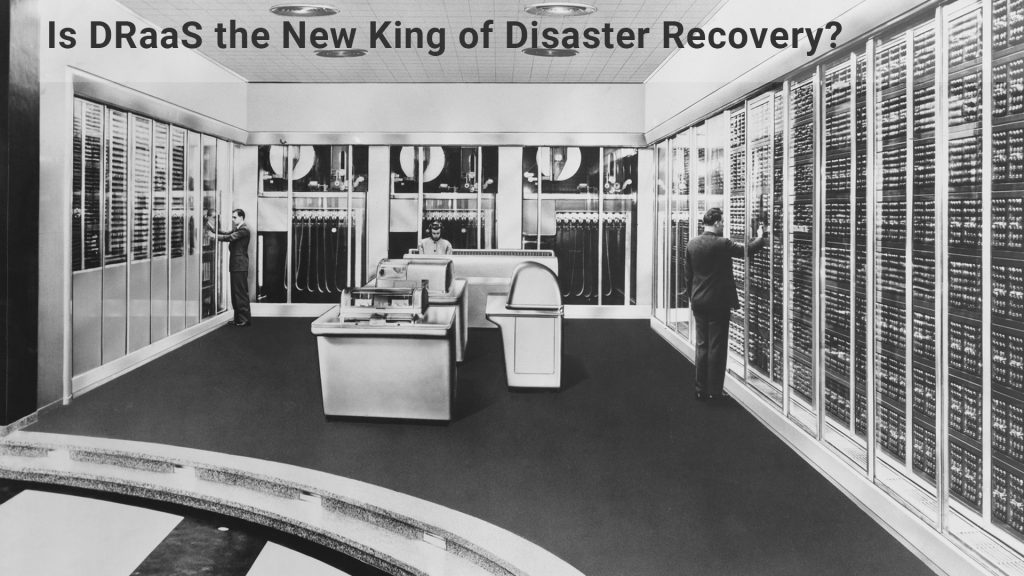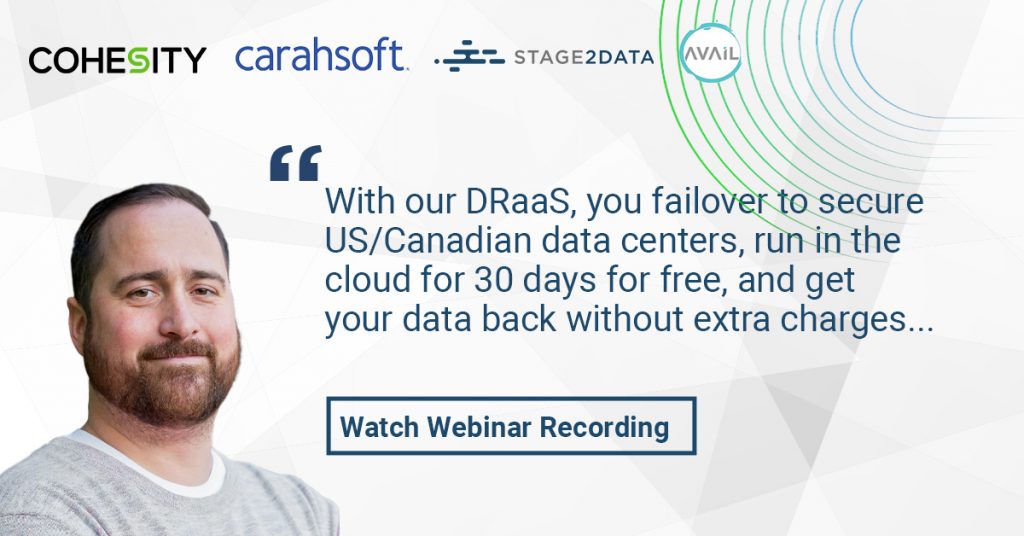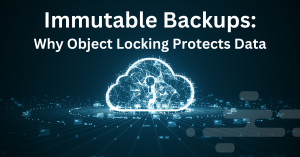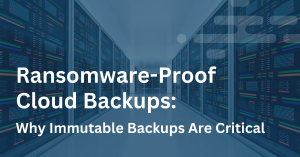The question is no longer “to DR or not to DR” but rather: “Are you choosing the right DR solution for your business?” Everything in business is interconnected, and being able to bounce back from setbacks is crucial. While technology has opened up incredible opportunities, it’s also brought new risks. A fire, flood, cyberattack, or even a simple power outage can cripple operations, leading to financial losses and a tarnished reputation.
That’s why having a solid plan to recover from these events isn’t just a nice-to-have, it’s a must-have. You have two main options: traditional disaster recovery and Disaster Recovery-as-a-Service (DRaaS). Let’s explore these two approaches so you can determine the best fit for your organization.
Understanding the Options: DRaaS versus Traditional DR
Both traditional DR and DRaaS aim to ensure business continuity in the face of a disaster, a cyberattack, or the like. But, they differ in implementation, scope and benefits. Let’s look at each one individually:
Traditional Disaster Recovery
➡️ Think of traditional DR as having a spare tire in your car’s trunk. It’s a physical, on-premises backup system that replicates your primary systems. In the event of a disaster, your operations fail over to this secondary site.
| Pros of Traditional DR | Cons of Traditional DR |
|---|---|
| Complete control over hardware and infrastructure | Significant upfront and ongoing costs |
| Potential for faster recovery if the secondary site is well-maintained | Requires substantial in-house IT expertise |
| Familiarity for many IT teams | Time-consuming maintenance and testing |
| Difficult to scale resources quickly |
Disaster Recovery-as-a-Service
➡️ DRaaS, on the other hand, is like having a roadside assistance plan. It’s a cloud-based solution where DRaaS providers manage your backup infrastructure and orchestrate recovery, eliminating the need for extensive hardware investment.
| Pros of DRaaS | Cons of DRaaS |
|---|---|
| Lower upfront costs (subscription model) | Less direct control over infrastructure |
| Managed service (setup, testing, maintenance) | Potential bandwidth limitations |
| Easy scalability to match business needs | Possible vendor lock-in (which you can avoid by reading this) |
| Includes advanced features (e.g., automated failover) |
Why DRaaS is Gaining Ground
DRaaS provides a compelling alternative to traditional DR for businesses looking for a cost-effective, scalable, and easy-to-manage disaster recovery solution. Some of the reasons for this include:
- Cost-Efficiency: DRaaS operates on a subscription model, eliminating the need for large upfront investments in hardware, software, and infrastructure. This pay-as-you-go approach makes DRaaS more accessible and affordable for businesses of all sizes, especially smaller companies with limited budgets.
- Simplified Management: DRaaS providers take care of the setup, testing, and maintenance of the DR environment. This frees up valuable IT resources, allowing internal teams to focus on core business activities rather than managing complex DR infrastructure.
- Scalability and Flexibility: DRaaS solutions can be easily scaled up or down based on your business’s changing needs. This flexibility means you only pay for the resources you actually use, making DRaaS a cost-effective option for growing businesses.
- Faster Recovery Times: DRaaS providers often offer advanced features such as automated failover and faster recovery times compared to traditional DR. This can significantly reduce downtime and minimize the impact of disasters on business operations.
- Geographic Redundancy: DRaaS providers typically maintain multiple data centers in different locations, providing geographic redundancy. This protects businesses from regional disasters and ensures that data can be recovered from a different location in the event of an outage.
- Enhanced Security: DRaaS providers often invest heavily in security measures to protect their infrastructure and customer data. This can provide businesses with a higher level of security than they could achieve with an on-premises DR solution.
- Reduced Risk: DRaaS can help businesses reduce the risk of data loss and downtime by providing a reliable and tested DR solution. This can help businesses avoid the financial and reputational damage that can result from a disaster.
- Expert Support: DRaaS providers typically offer 24/7 support, ensuring that businesses have access to expert assistance whenever they need it. This can be invaluable during a disaster, helping businesses recover quickly and efficiently.
Deciding What's Right for Your Business
The choice between traditional DR and DRaaS boils down to your organization’s specific needs, resources, and priorities. If you crave control and have the expertise to manage your own infrastructure, traditional DR may be the way to go. If cost-effectiveness, scalability, and a hands-off approach are more appealing, DRaaS could be your ideal solution.
Here are some key questions you should ask before making the decision:
- Budget: What can you afford to invest in disaster recovery?
- Expertise: Does your IT team have the skills to manage a traditional DR system?
- Downtime Tolerance: How much downtime can your business handle? (This is your RTO – Recovery Time Objective).
- Data Loss Tolerance: How much data can you afford to lose? (This is your RPO – Recovery Point Objective).
- Compliance: Are there any industry regulations that dictate how you handle data backup and recovery?
Final Thoughts
Disaster recovery isn’t something you can afford to ignore. It’s your safety net when the unexpected happens. By understanding your options and choosing the right strategy, you can safeguard your business and set yourself up for success in the long run.
So, before making your final call, take a step back and really think about the key questions we’ve covered. By carefully evaluating your budget, your IT resources, how much downtime or data loss you can handle, and any legal requirements, you’ll be in a great position to pick the best disaster recovery solution for your specific needs. This will not only protect your business but also help it grow stronger.
While both traditional disaster recovery methods and DRaaS have their place, DRaaS offers a more cost-effective, reliable, scalable, and secure solution for businesses. Finally, remember, disaster recovery isn’t just about survival; it’s about thriving in the face of adversity.







